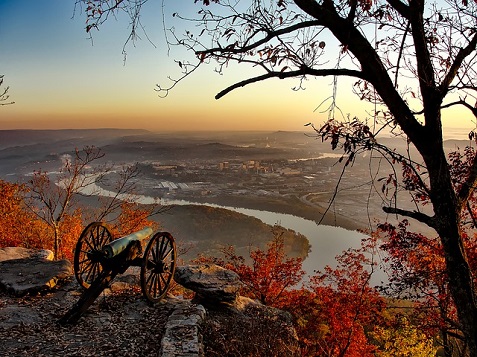Touring Civil War Battlefields

If you’re a history buff, you probably love traveling to places that bring to life some of the more interesting times in history. This is particularly true with military history, which explains why Civil War sites and battlefields are so popular as tourist destinations.
The dates of April 12, 1861 and May 9, 1865 are arguably some of the most important dates in American history. These are the official dates that encompass the American Civil War. Some people, sadly, have tried to apply a bit of revisionist history with regard to this time period. It’s important to remember that this was a horribly bloody time of wretched hardship in American history, which is precisely why it must be remembered as it really happened. As George Santayana said, “Those who cannot remember the past are condemned to repeat it.”
The People
Some of the most recognized names in American history come out of the Civil War. Rebel or Yank, Union or Confederate, people from both side are remembered to this day. Some in the glory of fame and others in the condemnation of infamy. And still others in the gray areas in between.
The people who lived and fought during this era left behind a treasure trove of documents about their experiences. In part, the official documents produced by both governments provide a public record of the actions of the politicians and military leaders of the day. In my personal opinion, however, the greater insight can come from the personal letters and journals of these larger than life figures. What did General Robert E. Lee write about in letters to his wife? What might Union General William Tecumseh Sherman have been thinking during his “March to the Sea”?
While the Internet may make things easier to research, the downside is that anybody with the right software and a modicum of know-how can alter or forge a document that will seem authentic in electronic form. Fortunately, there are repositories holding the originals, as well as reputable dealers and auction houses that have historical documents for sale to the individual collector.
The Places
The battlefields of the American Civil War seem more real than those in Europe or Southeast Asia. Possibly because I have seen the road signs telling of a historical site off the next Interstate exit in my travels, or perhaps it’s because it seems more directly a part of “my” heritage. Either way, they span the same spectrum of recognition level and reason for remembrance as the people. Traveling to some of the places spoken of in our history books can connect us to those times like nothing else.
Gettysburg National Military Park, Pennsylvania — Over the course of three days, July 1 through July 3, 1863, Union and Confederate troops engaged in what was the bloodiest battle of the war. It is also the place where President Abraham Lincoln gave his famous Gettysburg Address. Visit the museum or travel the area and climb the observation towers to view the land Generals George Meade and Robert E. Lee battled over.
Appomattox Courthouse, Virginia — This is the village where Gen. Robert E. Lee surrender the Army of Northern Virginia and, in effect, the entirety of the Confederate States of America. Here, one can hike along the trails the men of the two armies walked or visit the McLean House, the building where the formal surrender documents were signed.
Vicksburg National Military Park, Mississippi — The city placed under siege by General Ulysses S. Grant in the spring and early summer of 1863. Its location on the Mississippi River made it a vital hub for the movement of goods and troops for both the North and the South. Visitors here can visit the battle sites where both sides fought to secure the transport center, or they can learn about the USS Cairo, a Union Ironclad used to patrol the Mississippi.
Information on these and many other sites can be found at the National Park Service website.
The Heritage
The importance of the Civil War era really cannot be overstated, even in 2016. The remnants of that time still surround us. Abraham Lincoln is enshrined on our penny, our five-dollar bill and in one of the most iconic monuments in Washington, D.C.
Arlington National Cemetery, the final resting place of so many of the men and women who have died defending our country, is built upon the site of Robert E. Lee’s most cherished residence, Arlington House, the ancestral home of his wife’s family.
These are only a few examples of the lasting impact of the Civil War on America and her culture.
Related Posts
Posted in: Lifestyle
Tags: travel for men





